After seeing CoalCracker Bushcraft on YouTube using an American Civil War item called a Gum Blanket, which is a simple canvas sheet with a vulcanised rubber coating on one side, I thought to myself, that would make the idea groundsheet. It would be spark resistant, more abrasion resistant and quiter than plastic or a space blanket and not in the slightest bit slippy.
The only problem? Getting one from the US at a reasonable cost, they are available from various UK based Cutlers ( suppliers of historical war equipment for reenactors and collectors ) but only with a slit cut in the middle for use as a poncho.
So I researched a DIY route, and various sources cited Flexseal as an altenative to a factory applied rubber coating, however the only sources for this and similar compounds are also quite expensive, usually in the region of £40 and up for enough to coat a decent sized piece of canvas. Then it hit me, I have been using a product called Puraflex 40 to do everything from bonding door panels on the Defender to sealing guttering. According to the manufacturer, "Puraflex 40 is a high modulus, one component, polyurethane hybrid based sealant and adhesive that remains permanently elastic and has good adhesion to most substrates." Polyurethane is commonly used as a synthetic substitute for rubber, and this stuf can be had for approx £5 a tube. It took two tubes to coat the base of the GB 2.0.
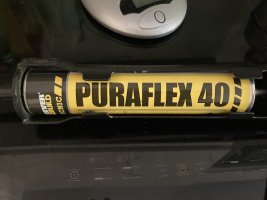
I tried it on a small piece of scrap canvas, and when it had dried it had the consistancy of, well, rubber. With the waterproof base sorted out, I thought about extra features. So I got a bigger piece of canvas, sewed it into a bag, so it could function as a browse bed, sleeping mat holder or even bivvy bag, and smeared the Puraflex over one side with a spreader knife from poundland, and left it to dry. If I do this again I will cover the uncoated side with paper and masking tape to prevent the smearing you can see in the picture.
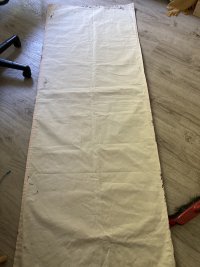
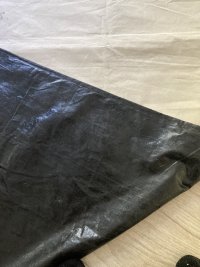
Finished weight for this is 1.7Kg (not for ultra lighters) 2m long and 80cm wide. It is completely waterproof on the base, I have had it sitting in the bathtub with tissue paper on the canvas side and a weight for three hours without leakage. It does not slip on the ground, makes no noise and is a tough as nails.
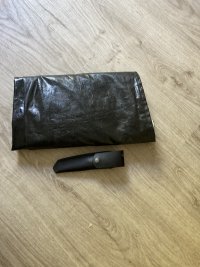
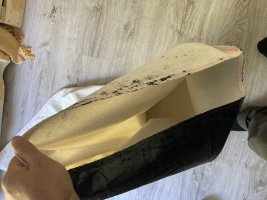
The thought occurs to me that the Puraflex could be used to re-waterproof the base of 58 Pattern sleeping bags, tents, maybe even old ponchos, however I have not tested it on synthetic fibres. However I do know that it does not bond to polyethylene, like the grabber emergency space blanket, cheap poly tarps or realy cheap tent floors.
Here it is with a roll mat tucked inside, ala cheapskate Savotta FDF sleeping mat.
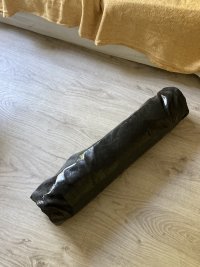
The only problem? Getting one from the US at a reasonable cost, they are available from various UK based Cutlers ( suppliers of historical war equipment for reenactors and collectors ) but only with a slit cut in the middle for use as a poncho.
So I researched a DIY route, and various sources cited Flexseal as an altenative to a factory applied rubber coating, however the only sources for this and similar compounds are also quite expensive, usually in the region of £40 and up for enough to coat a decent sized piece of canvas. Then it hit me, I have been using a product called Puraflex 40 to do everything from bonding door panels on the Defender to sealing guttering. According to the manufacturer, "Puraflex 40 is a high modulus, one component, polyurethane hybrid based sealant and adhesive that remains permanently elastic and has good adhesion to most substrates." Polyurethane is commonly used as a synthetic substitute for rubber, and this stuf can be had for approx £5 a tube. It took two tubes to coat the base of the GB 2.0.

I tried it on a small piece of scrap canvas, and when it had dried it had the consistancy of, well, rubber. With the waterproof base sorted out, I thought about extra features. So I got a bigger piece of canvas, sewed it into a bag, so it could function as a browse bed, sleeping mat holder or even bivvy bag, and smeared the Puraflex over one side with a spreader knife from poundland, and left it to dry. If I do this again I will cover the uncoated side with paper and masking tape to prevent the smearing you can see in the picture.


Finished weight for this is 1.7Kg (not for ultra lighters) 2m long and 80cm wide. It is completely waterproof on the base, I have had it sitting in the bathtub with tissue paper on the canvas side and a weight for three hours without leakage. It does not slip on the ground, makes no noise and is a tough as nails.


The thought occurs to me that the Puraflex could be used to re-waterproof the base of 58 Pattern sleeping bags, tents, maybe even old ponchos, however I have not tested it on synthetic fibres. However I do know that it does not bond to polyethylene, like the grabber emergency space blanket, cheap poly tarps or realy cheap tent floors.
Here it is with a roll mat tucked inside, ala cheapskate Savotta FDF sleeping mat.

